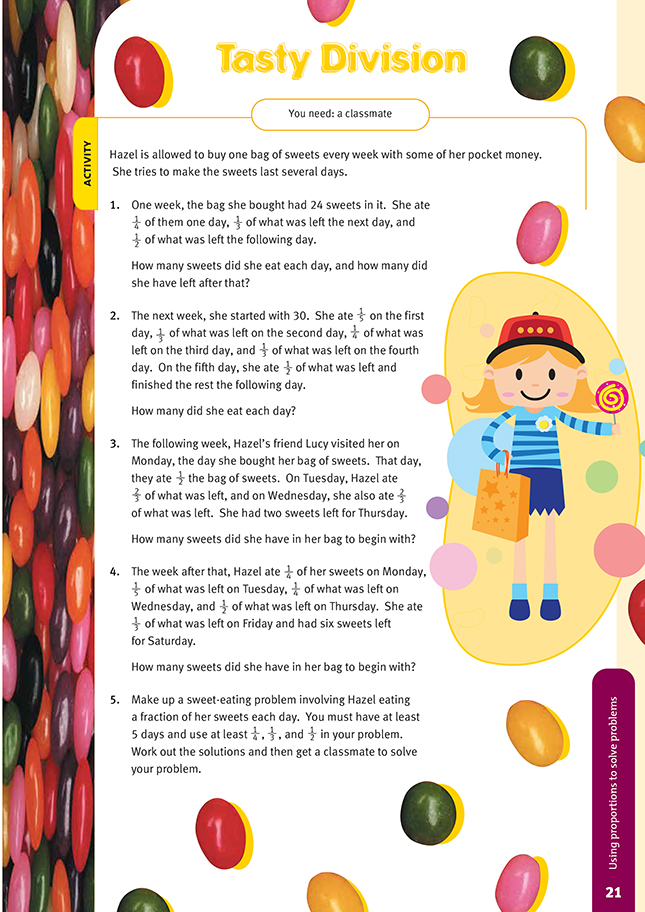This is a level 4 number activity from the Figure It Out series. It relates to Stage 7 of the Number Framework.
A PDF of the student activity is included.
Click on the image to enlarge it. Click again to close. Download PDF (199 KB)
find fractions of a whole number
FIO, Level 4+, Number, Book Six, Tasty Division
A classmate
The students will need to work systematically to find the number of sweets in each problem because there aren’t any shortcuts they could take. For example, in the first problem, the fractions have to be taken one at a time. On the first day, one-quarter of the 24 sweets were eaten, so this means that six were eaten and 18 were left. On the second day, one-third of the 18 were eaten (that is, another six), leaving 12. On the
third day, half of the sweets were eaten, which means that six were left. Over the period of 3 days, therefore, Hazel ate 18 sweets altogether, and there were six left.
In questions 3 and 4, the students will have to work backwards because, rather than being given the initial number of sweets, they are now given just the number left. One possible “working backwards” method is given in the Answers.
You could encourage the students to do most of the problem solving involving fractions in their heads. A strategy that they are likely to find useful in carrying out these mental calculations is to consider what the unit value is. For example, in question 4, the six sweets remaining for Saturday represent two-thirds of what
was there first thing on Friday. If six represents two-thirds, then one-third must have been three, and therefore three-thirds must have been nine. Likewise, the 30 that were left over from Monday represent three-quarters of Monday’s initial stock of sweets. It follows that one-quarter would be 10, and therefore four-quarters
would be 40.
Answers to Activity
1. Day 1: 6
Day 2: 6
Day 3: 6
Sweets left: 6
2. Day 1: 6
Day 2: 8
Day 3: 4
Day 4: 4
Day 5: 4
Day 6: 4
3. She had 36 sweets to start with. (Working backwards, Thursday’s 2 was 1/3 of Wednesday’s 6, which was 1/3 of Tuesday’s 18, which was 1/2 of Monday’s 36.)
4. She had 40 sweets to start with. (Working backwards, Saturday’s 6 was 2/3 of Friday’s 9, which was 1/2 of Thursday’s 18, which was 3/4 of Wednesday’s 24,
which was 4/5 of Tuesday’s 30, which was 3/4 of Monday’s 40.)
5. Problems and solutions will vary.
